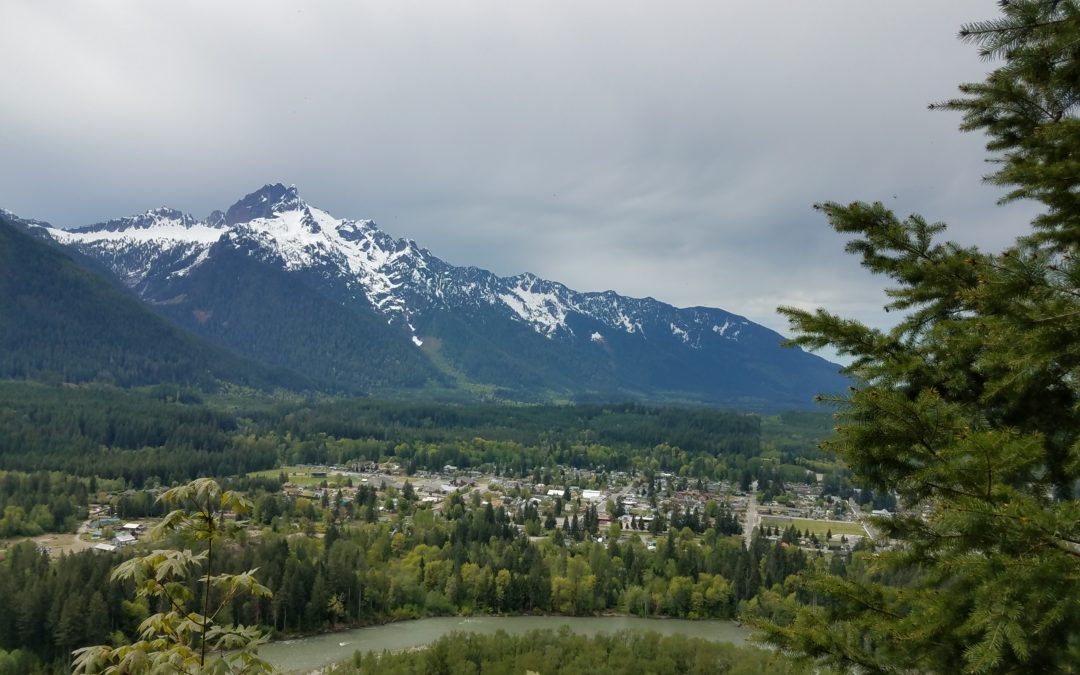By Doug Cooper, Vice President of Resources
Washington’s Department of Natural Resources (DNR) manages 2.7 million acres of forest and pasture land to provide a continuous flow of revenue for public schools, universities, the Dept. of Corrections, and Social and Health Services. Revenue on these “trust lands” is generated through leases and timber harvests. Last month the Board of Natural Resources (Board), which oversees management of these lands, decided to set aside more of the state forest trust lands to create new habitat for the marbled murrelet. Why did they do this and what does it mean for our mills and our communities in Washington?
Why is the state concerned about the marbled murrelet?
The marbled murrelet is a sea bird that flies inland to nest in a range that spans from Alaska to Northern California. They are elusive birds – the first nest in Oregon was only just discovered in 1990. Murrelets are currently listed as threatened under the Endangered Species Act and are thought to nest in late-successional forests and trees with nest platforms high above the ground. Likely causes of their population decline include changing ocean conditions, deforestation (conversion of forestland for development and agriculture), and loss of old growth habitat, among other possibilities.
To better understand this problem, Oregon State University is in the middle of an extensive study of the marbled murrelet. Since 2015, researchers have tagged 101 female murrelets at sea. Of those, only 12 have even attempted to fly to shore to nest. The implication is that there could be limiting factors in marbled murrelet population dynamics beyond habitat availability. Researchers will likely examine such factors, including food supply at sea, in the coming months and years. This is important research that should help inform plans for how to best support marbled murrelet populations. We are disappointed that Washington forest managers have decided to move forward with such a massive investment and convert productive forestland into habitat before this research is complete. By moving too quickly, the state could do irreparable damage to our forest sector and rural communities and have very little to show for it in terms of conservation outcomes.
What is the impact of this new plan?
DNR plans to set aside 37,000 acres of timberland for the murrelet in addition to the 567,000 acres already set aside for habitat protection in their current plan. As a result, 44 percent of state trust lands is now being reserved for habitat protection. Under the new plan, DNR claims that in 50 years there will be roughly 272,000 acres of marbled murrelet habitat on trust lands. These lands represent approximately $2.7 billion in lost timber value for rural communities.
What is the impact to Hampton?
DNR-managed state forests are a critical source of timber for our mills. The Board’s decision will reduce annual harvest levels on DNR trust lands by 85 million board feet over the next several years. While impacts will vary by county, some areas will see harvests and revenues decrease by as much as 50 percent. Within the next 15 years, harvests state-wide will drop 24 percent below current levels. This reduction presents three major risks to our business:
- DNR timber sales make up 30 percent of the supply for our Darrington, Morton and Randle sawmills. While sawmill resilience is based on a number of factors, including efficiency, competition, and product differentiation, this trend will make it increasingly difficult for Hampton to source logs in the region.
- Sawmills aren’t the only businesses that depend on DNR timber harvests. Reductions in state timber sales puts additional pressures on contract logging, trucking, and reforestation companies, many of whom already operate on tight margins and struggle to keep crews busy year-round. We rely on these small businesses to get logs from the forest to the mill now and in the future.
- The impact to schools and public services due to losses in timber revenue will be significant. The American Forest Resources Council estimates this decision will result in a loss of almost $30 million annually in timber revenues for local public services.
What can be done to protect forest sector jobs?
Three lawsuits have already been filed in response to this decision. Two of them, filed by timber-dependent counties and taxing districts claim DNR’s plan constitutes a breach of the state’s fiduciary responsibility to forest trust beneficiaries. One, filed by an environmental coalition, argues that the state’s plan does not do enough to create new habitat. These legal challenges will likely take years to resolve. In the meantime, state leaders should also be looking to balance out these pending losses by working with federal partners to increase harvests on federal lands. Federal forests represent over 43 percent of forestland in Washington and yet, they only account for 2 percent of harvest volume. Even with so little harvesting going on, the U.S. Forest Service still struggles to reach its own harvest goals. This year, there was no meaningful timber supply coming off the Mount Baker-Snoqualmie National Forest near Darrington, with forest managers only meeting about 10 percent of their harvest goal for the year. This situation should be unacceptable to anyone concerned about healthy forests and rural communities.
While Hampton will continue to advocate for timber-dependent communities regarding harvests on public lands, concerned residents should feel free to email state and federal managers to express their thoughts on current and future forest management in the state.
Washington Board of Natural Resources: bnr@dnr.wa.gov
U.S. Forest Service – Region 6 Regional Forester: PNWRegionalForester@fs.fed.us



Washington DNR has lost sight of its mission to sustainably harvest timber which will provide revenues for the counties and other beneficiaries and to provide timber for the milling infrastructure. Most of the land set-aside isn’t good Murrelet habitat, and the new Plan is greatly flawed!